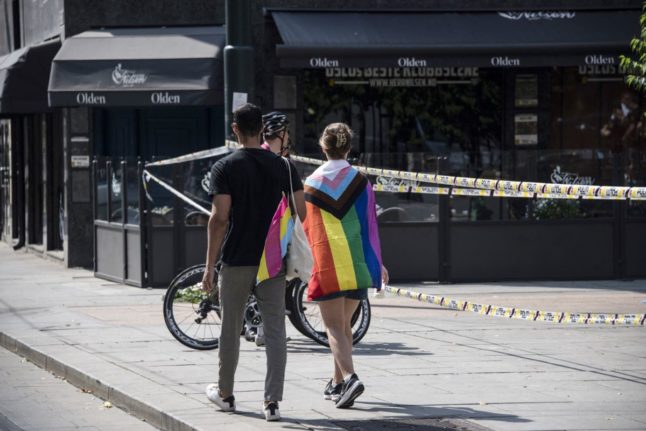On the morning of 29th November 1970, a woman was found dead and severely burned by a family out walking in the Isdalen valley near Bergen.
All logos and tags that could have been used to identify the body had been removed from the woman’s clothes, and a post mortem showed that she died of a combination of a medicine overdose and carbon monoxide poisoning from the flames.
Fingerprint evidence later connected two suitcases found at Bergen station to the woman, according to a new NRK documentary.
The suitcases contained sophisticated clothes, wigs and non-prescription spectacles – but no clues as to the woman’s identity.
However, a notepad with a series of codes written into it showed – once police had cracked the codes – that the woman had travelled extensively in Europe prior to arriving in Norway.
She was found to have travelled through Paris, Hamburg and Basel as well as between Oslo, Stavanger, Trondheim and Bergen.
Intense press coverage of the case followed in the weeks after her discovery, including speculation that she was a spy who had been liquidated in Isdalen.
But the mystery of who she was and how she died was never solved.
Despite putting extensive resources into the investigation, the police were never able to identify the woman and no relatives ever came forward.
Witnesses that met her reported her English to be poor and she was also heard speaking Flemish and German, according to NRK. Dental analysis showed that she was not of Scandinavian origin. Witnesses who came into contact with the woman while she was in Bergen later recalled her sophisticated, smart look.
She was “other than in magazines and movies, the kind of woman we hardly ever saw,” Frank Ove Sivertsen, who worked as a bellboy at the Hotel Neptun in Bergen in 1970, told NRK.
READ ALSO: Norway man confesses to 1993 murder
She used at least eight identities to check into hotels in the various cities, which all turned out to be fake.
“The question was, what was she doing in those places? Why did she go there? And why did she want to conceal both her identity and travelling route by using these codes?” says Carl Halvor Aas, a police lawyer involved in the original investigation into the woman’s death in 1970, in the NRK documentary.
“It’s all a great mystery. We don’t know,” Aas continued.
Etter langvarige analyser kan ekspertene nå slå fast hvor «Isdalskvinnen» kommer fra.
https://t.co/lBCUqNdh2b pic.twitter.com/sOTdwdbQdp— NRK (@NRKno) May 12, 2017
Without identification, the woman eventually became known as the Isdal Woman.
She was buried in Bergen in March 1971.
Now, Norwegian police agency Kripos has sent out a new international appeal in the hope of coming closer to discovering who she was.
The police have collaborated with broadcaster NRK to put together an impression of the woman’s features using DNA evidence.
A new notice – known as a “Black Notice” – has been issued by the Kripos criminal investigation service through Interpol.
“What is new is that we have finally been able to create a DNA profile. The aim of sending it out now is that if she is reported missing and there is DNA from relatives [in the database] then we will get a match,” Kripos senior advisor Maj Nordskaug told NRK.
Recent DNA tests have also revealed that the woman was European, reports the broadcaster. Now the case is being revived in the hope of solving one of Norway’s biggest crime mysteries.
But Nordskaug, who issued the Black Notice, told NRK that it can take “a long time” for DNA matches to be found.



 Please whitelist us to continue reading.
Please whitelist us to continue reading.